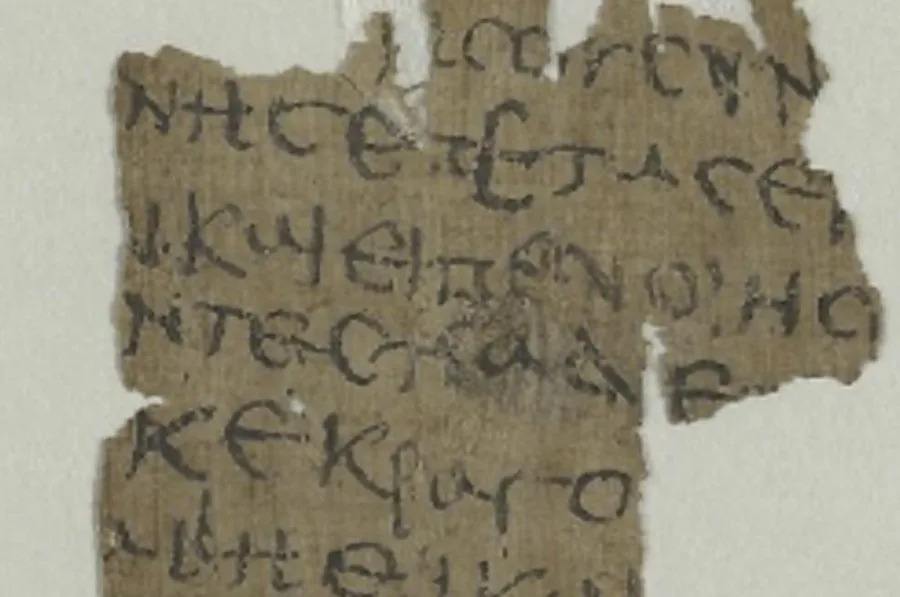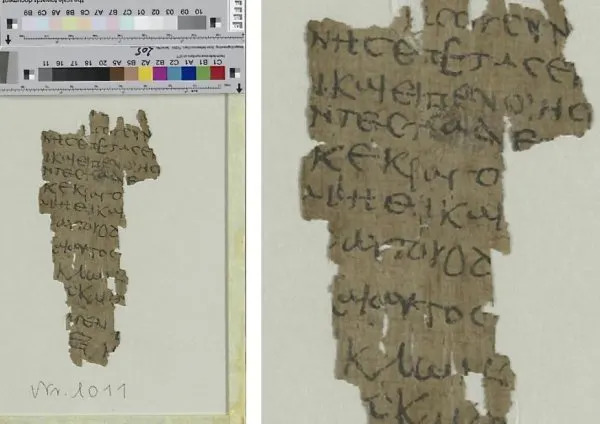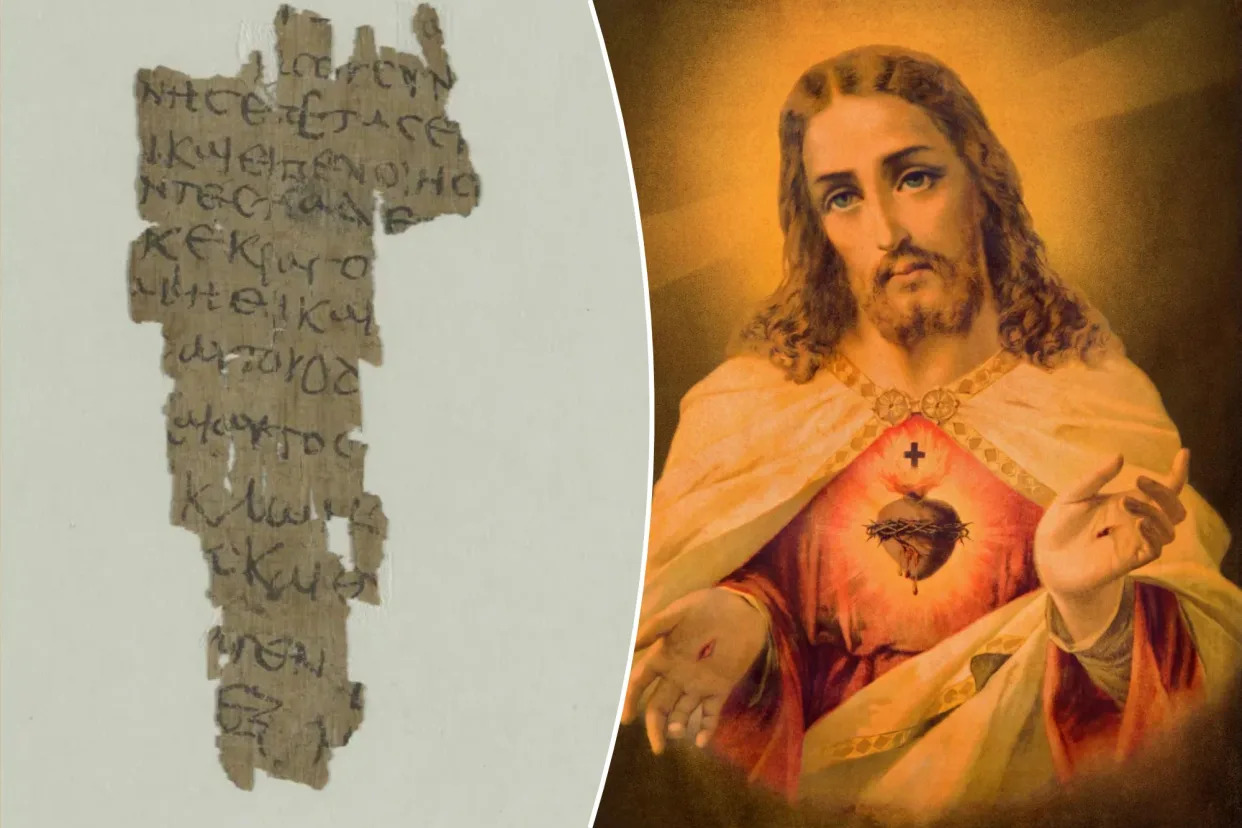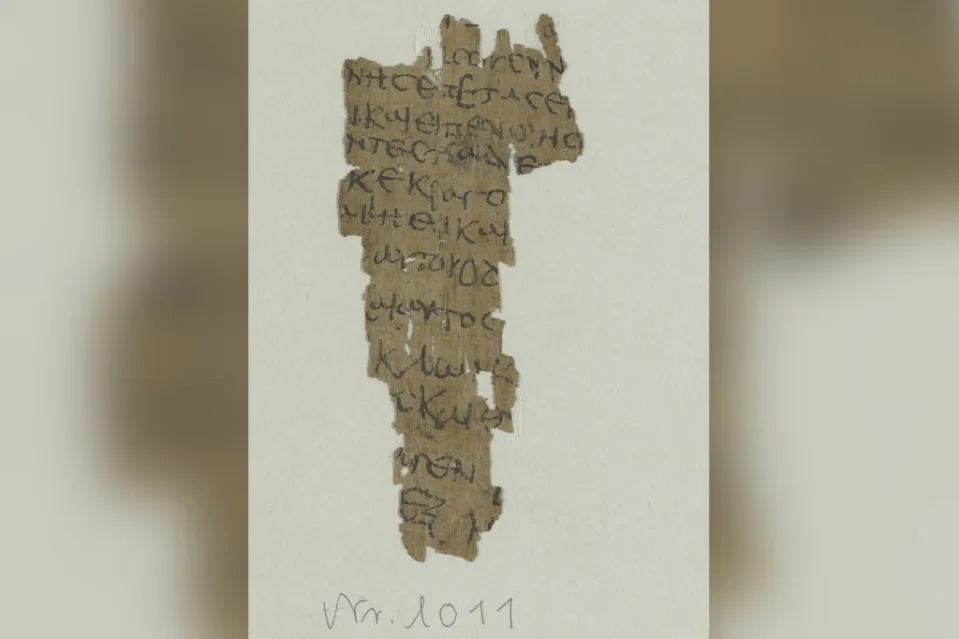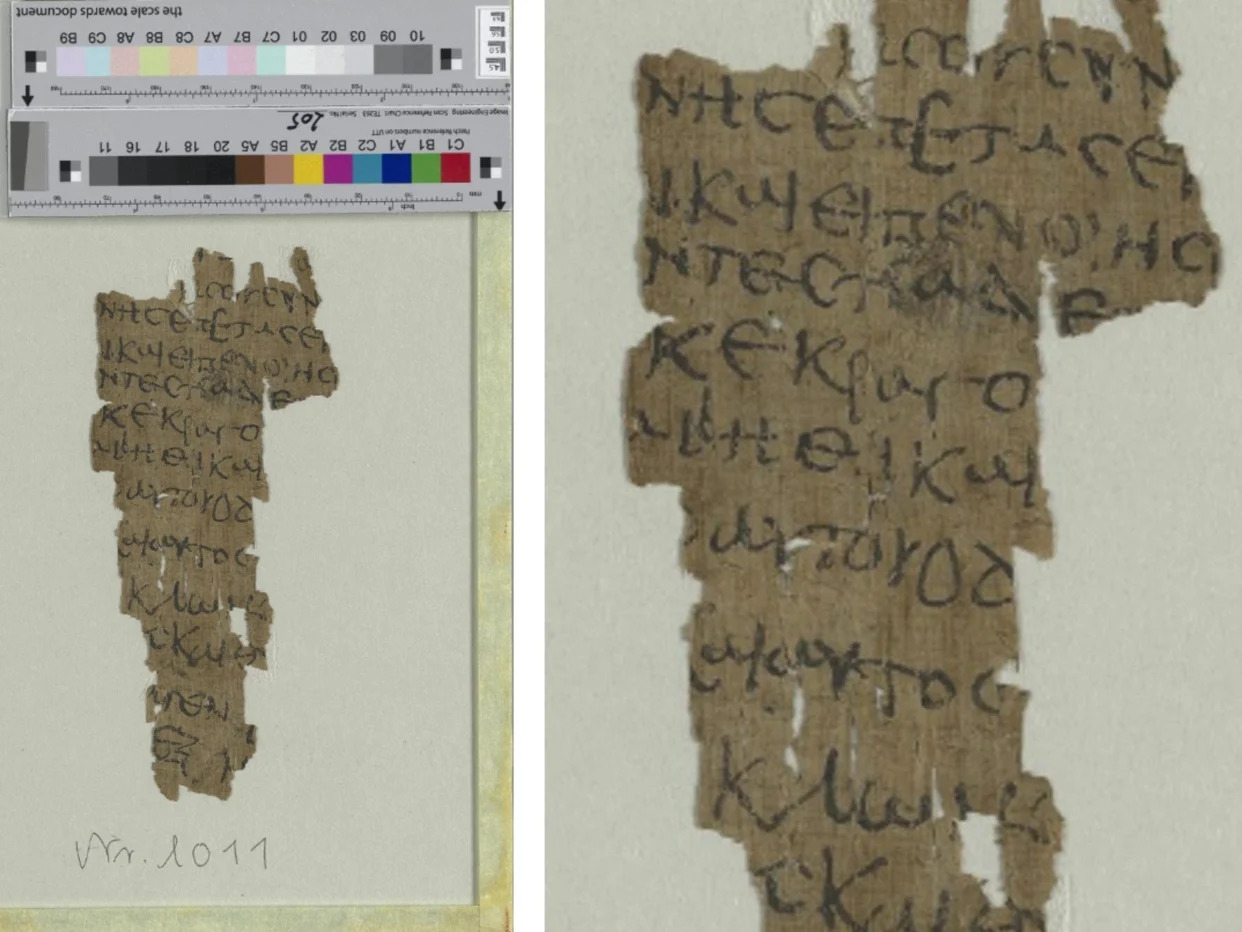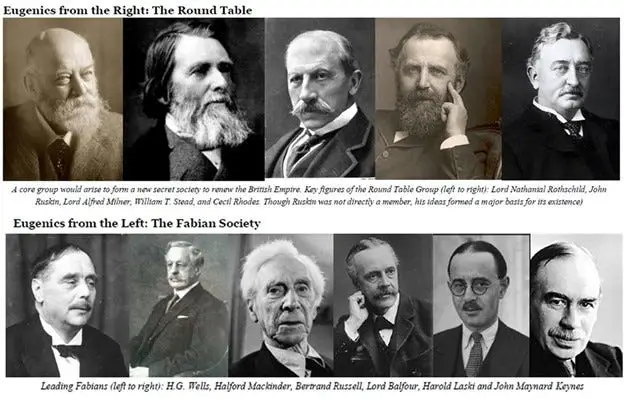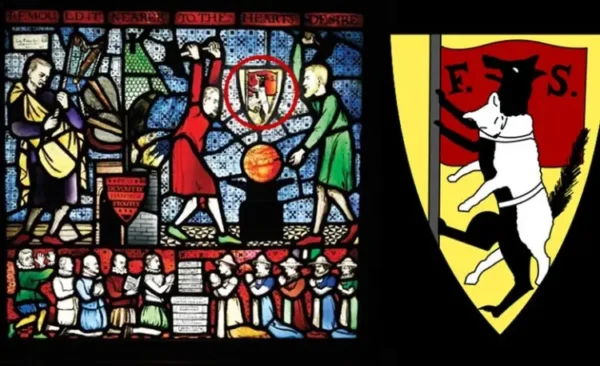If anything proves the validity of Occam’s Razor,i it’s contemplating the astounding attempts over two millennia to square Christianity’s circle, or rather triangle. Trinitarianism: one God existing in three coequal, coeternal, consubstantial divine persons: God the Father, God the Son (Jesus Christ) and God the Holy Spirit, three distinct persons (hypostases) sharing one essence/ substance/ nature. The ‘what’ is one, the ‘who’ is three.
The Old Testament has been interpreted as referring to the Trinity in many places. One of these is the prophecy about the Messiah in Isaiah 9. The Messiah is called ‘Wonderful, Counselor, Mighty God, Everlasting Father, Prince of Peace.’ Some Christians see this verse as meaning the Messiah will represent the Trinity on Earth. This is because Counselor is a title for the Holy Spirit (John 14:26), the Trinity is God the Father, Jesus, Son, the Prince of Peace, the Counselor Spirit.
But this trinitarianism is very different from the Hindu Brahma (creator), Vishnu (sustainer), Shiva (destroyer), or the Roman Diana.
It was only formulated in the 3rd century by Tertullian, based on the New Testament (NT) writings from the late 1st century early 2nd century. They contain several Trinitarian formulas, including Matthew 28:19, most clearly in 1 John 5:7. But modern Biblical scholarship largely agrees that 1 John 5:7, found in Latin and Greek texts after the 4th century and found in later translations such as the King James translation, cannot be found in the oldest Greek and Latin texts. Verse 7 is known as the Johannine Comma, which most scholars agree to be a later addition by a later copyist. This verse reads: Because there are three in Heaven that testify – he Father, the Word and the Holy Spirit – and these three are one. This verse is absent from the Ethiopic, Aramaic, Syriac, Slavic, Armenian, Georgian, and Arabic translations of the Greek New Testament. Ditto Matthew 28. The debates later moved from the deity of Jesus Christ to the equality/ inferiority of the Holy Spirit with the Father and Son. Need I say more?
A perusal of Wikipedia page Nontrinitarianism (i.e., non orthodox Trinitarianism) identifies close to a hundred variations on the theme, trying to convince that 3 really is 1. My favorites:
*Arianism, popular until the Council of Nicaea, argued that the pre-existent Son of God was directly created by the Father, before all ages, and that he was subordinate to God the Father. Arius’ position was that the Son was brought forth as the very first of God’s creations, and that the Father later created all things through the Son.
*The Adoptionist theory was perhaps the most popular in the 2nd-3rd centuries, which holds that Jesus was adopted as the Son of God at his baptism, his resurrection, or his ascension, but this theory died out when it was declared a heresy in the 4th century when the 4th century Nicene Crede was agreed in Constantinople, the capital of Christianity.
*Ebionites (1st-4th centuries) observed Jewish law, denied the literal virgin birth and regarded Jesus as the Jewish Messiah and the greatest prophet of God. Period.
*Socinianism taught that Jesus was the sinless Messiah and redeemer, and the only perfect human son of God, but that he had no pre-human existence. They interpret verses such as John 1:1 to refer to God’s plan existing in God’s mind before Christ’s birth, and that it was God’s plan that ‘became flesh’, as the perfect man Jesus.
*Unitarianism holds that Jesus was inspired by God in his moral teachings and that he is the savior of humankind, but he is not equal to God himself.
*Many Gnostic traditions held that the Christ is a heavenly Aeon but not one with the Father. Docetists asserted that Christ was born without any participation of matter and that all the acts and sufferings of his life, including the Crucifixion, were mere appearances.
Christian heterodoxy flowered throughout the Middle Ages despite Pauline police. The democratic egalitarian spirit-filled Jesus movement slowly atrophied into the repressive, bureaucratic Catholic Church, culminating in the 6th century Gelasuis Decree, a list of distrusted and rejected works not encouraged for church use, which banned 60 books including 9 gospels, 4 sets of apostolic acts and 3 revelations, as well as 35 heretics.
Underlying this debate through the centuries were real questions:
*Is Jesus God?
*Was it Jesus who was crucified?
*If so, then did he physically resurrect as apostles claimed?
The above nontrinitarians are all closer to Islam than the official Pauline creed. Most claim Jesus as ‘son of God’ in some sense, but with God supreme, using Jesus as intermediary. Ebionites Jewish Messianism is probably closest to Islam, where Jesus is the ‘greatest prophet’ only. And the Unitarians, a 17th century offshoot of the 16th century, the Radical Reformation, and which gave birth to Anabaptist groups like the Hutterites, Amish and Mennonites. The Ebionites and Unitarians are ‘Christianity without Paul’ or ‘Islam without Muhammad’, though the Unitarians’ actual beliefs are so lax that it’s fine to reject pretty well everything (virgin birth, miracles, resurrection), making it more a liberal humanism.
Interestingly, later Protestant heretics, the Anabaptist Hutterites and Amish, were rediscovered during Covid, as they refused vaccines, relying on (medieval) herd immunity. While infections were high, death rates from the virus are lower because their older people live with family and extended family and not in old people’s homes, and usually maintain a healthier lifestyle. Lev Tolstoy was a big fan of the Anabaptist Mennonites and gave the income from his final novel Resurrection to them so they could emigrate to North America, freed from serving in the Russian imperial army.
In The Gospel in Brief: The life of Jesus (1881), Tolstoy asks:
What is it to me if Christ was resurrected? The questions important to me are:
*What should I do?
*How should I live?
Man is the son of an infinite source not by the flesh but by the spirit. Therefore man should serve this source in spirit … True life is outside of time, exists only in the present.
Tolstoy was excommunicated by the Orthodox Church for his heretical thoughts. The New Testament is stinking filth with buried jewels. But he sees himself as a true believer: the Jesus message transcends all answers from other cultures. My study is like reassembling a broken statue. The teachings of a great man must express clearly that which others only expressed unclearly. Socrates is clear. Christianity is not. The dogma — trinity, pentecost, seven sacraments for salvation, the communion ritual. They are not in Jesus’ teachings. Why did people turn Jesus into God? Tolstoy’s answer: The teachings were so transformative, they mistook the messenger of it as a God. Don’t look for inner peace from my study, he warns, but truth.
Tolstoy knew and respected Muslims. They recognize Moses, Jesus, Muhammad, who made clear meaning of Moses and Jesus’ revelations. The Muslim looks at teachings of Jews and Christians for what agrees with his mind and heart.
Islam’s roots in Christian heterodoxy
There were many Christian and Jewish stories circulating during Muhammad’s lifetime, and hadiths relate how the Prophet spoke with Christians and Jews. Muslim apologists argue that any overlaps between the Quran and such sources hark back to the original Truth behind them and that that Truth is what the Quran reveals. Fair enough, but it is still interesting to see how close to the Truth various popular narrations or actual Christian or Jewish texts came, as precursors of the Quran.
Pauline ‘pagan Christianity’ became a strict orthodoxy by the 2nd century, but alternative versions of Jesus’ message were strong until the 9th century, surviving in the eastern sects with a colorful array of gospels and apocalypses. Ironically it was the Reformation and the printing press that proved lethal for Christian heterodoxy. Colorful was ou,t and it was much easier to control what was read when everything was now printed (and approved).
The apocryphal works were prompted by the need of alternative narratives to fill in blanks or mull over theological problems not adequately explained. Things Jesus should have said or done if he had the time. ‘What would Jesus do?’ The theological need produced the required texts.
Philip Jenkins, in The many faces of Christ: The thousand-year story of the survival and influence of the lost gospels (2015), shows how the James/Jacob version of Jesus’ Messianism through the years was trying to keep the central monotheistic legacy in tact. That kind of ‘Christianity’ would not have made Jews the outcasts of Europe (and the monsters of today in Israel) as happened.
Rejecting Paul’s innovations offends Christians, as Tolstoy warned, but it is necessary to overcome the bigotry that came with dubious dogma and unending communal strife.
That said, we can marvel at the blossoming of monotheism in the Middle Ages, and thank the heterodox Christian cultural milieu of the time for some of the most striking images in the Quran.
In the 2nd century pseudo Infancy gospel of Thomas,ii boy Jesus fashions a bird from clay and then blowing on it, bringing it to life as it flies away. Surah 5:110 Thou makest out of clay, as it were, the figure of a bird, by My leave, and thou breathest into it and it becometh a bird by My leave.
Muslim apologists argue that, yes, the original Bible contained the apocryphal story of Jesus making and animating clay birds, and that the Quran was actually correcting a wrongful exclusion of this apocryphal from the canon. Fine. Oscar Wilde thumbed his nose at such nitpicking: talent borrows, genius steals. If ‘the Church’ had had its way, this delightful and profound story, an enduring symbol of belief, would only have appeared in the Quran. Given the plethora of gospels in circulation in the 7th century, especially in outposts like Arabia, who knows what other ‘caves of treasures’ have survived only because of the Quran?

left: Jesus raises the clay birds of his playmates to life. right: The Cave of Treasures recounts the lineage of Man from Adam, Noah, Abraham, Isaac, Moses, Jesus, popular in eastern Christiandom in the 6-7th centuries. Like many other priceless treasures, it survives only thanks to an Arabic translation.
Jenkins brings the time of the Middle Ages from the 2nd century to the Reformation to life. The medieval period is fascinating, strikingly similar to today’s mostly visual society, with bible epics and a secular heavenly kingdom courtesy of Cecile B de Mille and Walt Disney. Austere Islam arose at the height of this imaginative time, which ended with the extreme austerity of the Reformation and the rise of scientism leaving Islam as a fascinating time capsule for reimagining Christian civilization at its peak, minus Paul’s dogma.
From the birth of Islam in the 7th century, it has existed in dialogue with Christianity. For much of Muslim history, Christians composed a large proportion of the population of the Muslim world, Egypt, Syria, Iraq. Muslims were living in Europe by the 8th century, in Spain, later Sicily, the Balkans. Christian subjects under Muslim rule were free to practice their faith and read old texts that were suppressed in Catholic or Orthodox lands. What an era! Medieval society was full of religion, with successive waves of conversion zeal.
Similarly, after the sudden burst of zeal and the expansion of Islam across the known world, Islam too spread peacefully. The key difference being Christianity as the religion of empire, and Islam as the conqueror of empire, born free in the desert.
As Christian civilization slowly came to pagan Europe, next door Islamic civilization was already flourishing. Lots of learning, translating, debate. As late as 649 a Nestorian bishop wrote: “These Arabs fight not against our Christian religion; nay, rather they defend our faith, they revere our priests and saints, and they make gifts to our churches and monasteries.” At the same time Islam was influenced by diverse Christian traditions. And as religious rivals, Muslims would have welcomed any dissidents from the Pauline mainstream. The apocryphal/ Islamic Jesus was proclaimed in Quranic recitations across much of Europe, in mosques of Toledo and Palermo Seville and Sofia, Athens and Budapest, Belgrade and Bucharest.iii (Too bad about the Crusades)
Muslim gospel
Sayings of Jesus recorded by early Muslim commentators resemble Q source’s collection of aphorisms. Some sound like Manichean Dualist:
*The world is Satan’s farm and its peoples are its plowmen.
*The world is a bridge. Cross this bridge but do not build upon it.
*Do not examine the sins of people as though you were lords, but examine them as though you were servants. critique Kharijite movement.
*Just as kings have left wisdom to you [scholars], you should leave the world to them. largely supportive of government because any government is better than none at all.iv
*Jesus addressing a self-proclaimed worshipper: What is your brother doing? Caring for me. Your brother is more devoted to God than you.
*Blessed is he who sees with his heart but whose heart is not in what he sees.
*Console me, for my heart is soft and I hold myself in low esteem. emphasizing Jesus’ human weakness.
*Be in middle, but walk to the side.
*Be at ease with people and ill at ease with yourself.
*Those among you who sorrow most in misfortune and the most attached to this world. Jesus as fierce ascetic. also
*A pig passed by Jesus. ‘Pass in peace.’ How can you say this to a pig? Jesus: ‘I hate to accustom my tongue to evil.‘v
It’s eerie how the Jesus hidden away by Pauline orthodoxy managed to resurface in Islam 7 centuries after Jesus died. A Jesus ‘resurrected’ in an environment where he becomes a Muslim prophet. Belonging to a common age-old fund of wisdom found in the rich traditions of near eastern cultures. Also with roots in Hellenistic civilization.
Their attribution to Jesus reveals a lot about both an unknown Jesus and how Islam sees Him. When Islam arrived, the Church had not yet enforced its dogmas in the near east, i.e. there were mutually hostile Christian communities. The Church only cemented its dogmas in the 10th century, by which time many ‘heretics’ often found in Islam a better fit.
Some likely founded Sufi orders. Jesus is one of the major spiritual heroes of Sufism. Basra was an important base for the Church of the East and the earliest center of Islamic Sufism. Syria’s Alawites follow several Gnostic ideas, including the transmigration of souls, to the point that many orthodox Muslims do not consider it Islamic. True Gnostics, both Alawites and Druze are famous for the extreme secrecy of their faith. Islam offered a message appealing to the old Dualists who were hostile to priests, institutional churches.
It’s a shorter step from Christian to Muslim than from Jewish. Apocryphal texts were alive and well among Eastern congregations long after their formal exclusion from the NT canon in the 4-5th centuries. Quranic images of Jesus and the Christians echoed a living—not imaginary—Christianity, reflecting some of the lost Jesus as Christianity became the religion of empire, caught up in intrigues with secular power.
When Muslims occupied the eastern Christian territories they were intensely exposed to the writings of ancient centers of Christian heterodoxy as Syria Egypt and Mesopotamia. The Islamic world became a treasury of writings otherwise lost or suppressed in Latin Europe. Muslim scholars preserved priceless documents from the earliest church, texts that were lost to Christendom.
A Muslim Gospel of Prophet Jesus would be anti-Pauline for sure, but not anti-Christian like the Toledot yeshu (life of Jesus), the nasty Jewish version. Written in the 9th century prior to the 14th century it would have been available in any large town in Europe where Jewish communities existed. After the 14th century Black Death, the Jewish center of gravity shifted to eastern Europe. Based on a deceptive Jesus, Christianity was depicted as at best a parody religion, a pallid imitation of authentic Judaism.vi Luther was appalled by it; it poisoned his attitude to Jews and Judaism, which in his early years had been relatively tolerant. By 1540s he was urging that Jews be expropriate and their faith utterly forbidden. In Germany his anti-Jewish fury had a long and hideous afterlife.
In fact, there is such a ‘gospel’, the 14th century Gospel of Barnabas, which more or less follows the canonical NT, with the addition of the prophecy of Muhammad. Jesus: and the mesenger of God when he shall come, of what lineage? Disciples: of David. Jesus: you deceive yourselves. The promise was made in Ishmael, not in Isaac.vii It is Judas that is mistaken for Jesus and crucified. Evil men, pretending to be diisciples, preached that Jesus died and rose not again. Others preached that he really died, but rose again. Others preach that Jesus is the Son of God, among whom is Paul deceived.
The Gospel of Barnabas, probably written by a convert monk, has been rediscovered periodically, lauded as an explosive demolition of Christian orthodoxy. Deist skeptic John Toland found a copy in Amsterdam and wrote Nazanernus, or Jewish, Gentile and Mahometan Christianity (1718). He saw it as an account of primitive Christianity without the Trinity and the canceling of Jewish law. Jewish Christianity. The original plan of Christianity. Toland was popular in enlightenment circles. When a scholarly English translation was published in 1907, it created a sensation in Islamic lands, especially India.
But the real thing would simply be Jesus’ actual sayings which Muslims have incorporated into their faith. The Muslim Jesus. Such a work has been immanent all along, scattered in hadiths, works of ethics and popular devotion, Sufism, wisdom anthologies, histories of prophets and saints, from the 2nd/ 8thviii century to the 12th/ 18th century. Muslims in the first century of Islam were generally quite receptive to the religious lore of Judaism, Christianity and other religions of the new Muslim empire. The first such ‘gospel’ was only complied in 1896 a collection of 77 sayings. This was supplemented and published as 225 sayings (in Latin) in 1919. A new version The Muslim Jesus: Sayings and stories in Islamic Literature, with 303 sayings, was published by Tarif Khalidi in 2001.
In The Muslim Jesus, Khalidi offering a Jesus quite different from that of Christian Europe. The Jesus of Muslim tradition is a fierce ascetic, not the figure of the canonical gospels. A 9th century commentator Ahmad ibn Hanbal reported a saying of this Jesus: I toppled the world upon its face and sat upon its back. I have no child that might die, no house that might fall into ruin. The Muslim Jesus is Sufi, his parables and aphorisms like Zen koans. Jesus points to the birds of the sky and speaks of how God cares for them. He urges his followers to lay up treasures for themselves in heaven, to fast and pray in secret, unlike the hypocrites. Repay cruelty with kindness. He who has not been born twice shall not enter the kingdom of Heaven.
The only direct quotes from either the OT or NT in the Quran are ‘an eye for an eye’ and ‘rich man and the camel passing through the eye of a needle.’ Muhammad knew many Jews and Christians and honored Jewish and Christian scriptures, but it is wrong to suppose that anyone had any direct role in inspiring revelation. There was no ‘Arabic Bible’ at that point.
The language of the Quran is a kind of eternal present. Past, present, future laid out in a continuum. The structure is a typology of Quranic prophets, the model of prophecy recognizable by the manner in which a particular prophet sets about his mission of warning, rejection, vindication as retribution. A Christian or Jew today would be okay with the manner in which Moses, Joseph, David are presented. Not Jesus. The Quran was free to use, indeed, to preserve any nugget of Truth in the apocryphal infancy stories and miracles, gospels, as well as Syriac, Coptic and Ethiopic literature.
More emphasis is on the miraculous birth than Jesus’ Passion. Jesus is almost always ‘son of Mary’. There is no Sermon on the Mount, parables, teachings on law and spirit, no Passion. There are faithful disciples, humble and pious, God’s unity. The Quranic style is argument and counter-argument in the face of sneers from unbelievers and quarrelsome religious communities.
Jesus’ image is shaped by the Quran’s own corrective message, pruning, rearranging of an earlier revelation regarded as notorious for its divisive and contentious sects. It is a trustee of an inheritance, not a relative of the testator.ix i.e., Muhammad inherited the Christian (and Jewish) books, canonical and noncanonical, but it is a new, distinct religion, not beholden to quarrelsome, misguided relatives. Islam claims to be the true version of the underlying treasure (the true monotheistic path), not some wayward child of Christianity.
Examples of Quran and popular Christian imagery of the time:
*When Muhammad received his first revelation, he feared that he may have been visited by an evil spirit. He ran home to his wife, Khadijah, saying, ‘cover me, for I fear I may be possessed by an evil spirit.’ Khadijah did not believe Muhammad was possessed by an evil spirit, and she took him to her cousin, Waraqah ibn Nawfal, a Christian, who was well versed in the scriptures. It was this Christian who first suggested to Muhammad that he may have been visited by the angel Gabriel, and therefore, may be a Prophet.x It is believed that Waraqah ibn Nawfal belonged to a group of Ebionite Christians, who maintained the Jewish laws of circumcision, avoidance of pork, and emphasized God’s Oneness.
*Early biographies suggest Muhammad had a sympathy for Mary. When his forces destroyed hundreds of idols in Mecca, he reverently preserved an image of the Virgin and Child.xi
*Popular reading then would have been Christian or Jewish stories like The Cave of Treasures (590s) when Muhammad was a young adult. He travelled as a merchant husband of a respected merchant widow Khadija and such works were the HBO/ PBS of the day.
*The Trinity is rejected out of hand as a later invention and is never deconstructed except as denying God’s indivisibility. There is even a hint that the Trinity was Father, Son and Mary, not spirit. The Father-Son-Spirit triune does not appear in the Quran. One of the most dramatic moments in the Quran is God taking Jesus to task 5:116: And [beware the Day] when Allah will say, “O Jesus, Son of Mary, did you say to the people, ‘Take me and my mother as deities besides Allah ?’ ” He will say, “Exalted are You! It was not for me to say that to which I have no right. If I had said it, You would have known it.
It may be an allusion to heretical Arab Christian Collyridians, mentioned in the 4th century and possibly having survived into Muhammad’s time, so the Quran could be addressing their understanding of the Trinity. As to the purpose of verse 5:116, the most plausible explanation is clearly that it was a polemic against real or imagined Christian belief in the Trinity. Consider 4:171. Do not say “Three”. Stop it. That is good for you. Allah is the only One God. He is far too pure to have a son. Neither ayat directly addresses the ‘real’ Trinity, but it looks like Muhammad was criticizing not only the Trinity but the deification of Mary which had been proceeding apace after Paul (who hardly mentions Mary at all).
*In the Roman Catholic tradition Mariology is seen as Christology developed to its full potential (Paul would have been horrified). Veneration for Mary is based on the reference in the Gospel of Luke to Mary as ‘the selected handmaid of the Lord’. Particularly significant is Mary’s presence at the Cross, when she received from her dying Son the charge to be mother to the beloved disciple. The theological development of devotion to Mary begins with Justin Martyr (100–165) who articulated Mary’s role in salvation history as the Second Eve. While Jesus and Mary are central to the Quran, they are very different, Jesus is more ascetic and Mary a model of piety and courage, and the honored vehicle for Jesus’ appearance. Neither are part of a ‘salvation history’ of Jesus dying for our sins, and Mary as intercessor in this. There is no ‘original sin’ in Islam. Jesus came to add to the Jewish Covenant, with a universal message of love and compassion. 4:171: The Messiah, Jesus, son of Mary, was no more than a messenger of Allah and the fulfilment of His Word through Mary and a spirit created by a command˺ from Him.
*Paul described the crucifixion as being to the Jews an obstacle that they cannot get over, to the pagans madness. 1Cor1:23. Did the Quran follow a Docetic form of Christianity? But the Jesus of the Quran is very much flesh and blood while in Docetism he is a mere shadow. In denying the crucifixion, the Quran is denying that the Jews killed him, and elevates him to God as part of his vindication as a prophet, reconciling him to the general typology of Quranic prophecy. It is the ascension rather than the crucifixion which marks the high point of his life in the Quran. There is no Passion, stations of the Cross in Islamic commentary. It is closer to the Docetists.xii or the Gnostic Apocalypse of Peterxiii
*In the Cave of Treasures, probably the most popular religious work of the Middle Ages, which begins with the creation of the world and ends with the Pentecost, the devil‘s excuse for not bowing to Adam is that he was created from fire, while Adam was created from dirt. It is this tradition that is reflected in the Qurʾān: ‘I am better than he is. You created me from fire. You created him from clay.’ (Q 7.12; cf. 15.33; 17.61; 38.76). Cave of Treasures: When the leader of the lesser order saw the greatness given to Adam, he became jealous of him and did not want to prostrate before him with the angels. He said to his hosts, ‘Do not worship him and do not praise him with the angels. It is proper that you should worship me, for I am fire and spirit, not that I worship something made from dirt. The Life of Adam and Eve (Jewish apocrypha 200BC–100AD) would have been popular and is much like Quran 18:50 Kahf: We said unto the angels: fall prostrate before Adam and they prostrated, except for Iblis. He was of the jinn and departed from the command of his Lord.
*Seven sleepers of Ephesus Quran 18:9. Clearly inspired by disciples being persecuted in the 3rd c, during the persecutions by the Roman Emperor Decius, around 250) and who hid in a cave, as related by Syriac Father Jacob of Serugh (c. 450–521). The cave was opened during the reign of Theodosius II (408–450)—in AD 447 when heated discussions were taking place between various schools of Christianity about the resurrection of the body in the day of judgment and life after death. Some Jewish circles and the Christians of Najran believed in only three brothers; the East Syriac, five, others seven, which explains the curious ayat 18:22: My Lord is most knowing of their number. None knows them except a few. So do not argue about them except with an obvious argument and do not inquire about them among [the speculators] from anyone. The pilgrim account De situ terrae sanctae, written between 518 and 531, records the existence of a church dedicated to the sleepers in Ephesus, also part of the Quran rendition. How long they slept is also debated but the Quran settles on 309 (lunar) years or 300 solar years.xiv
The Seven Sleepers were included in the Golden Legend compilation, another popular book of the later Middle Ages, which fixed a precise date for their resurrection, 478, in the reign of Theodosius. The legend was rediscovered by Donne, and The Golden Legend may have been the source for retellings of the Seven Sleepers in Thomas de Quincey’s Confessions of an English Opium-Eater, in a poem by Goethe, Washington Irving’s Rip van Winkle, H. G. Wells’s The Sleeper Awakes.
*The cosmography of the times, such as that of Syriac authors like Ephrem, explains the Quran ‘Go down!’ to Adam and Eve. Ephrem refers to paradise as being at a great height, beyond the world-encircling ocean, and was the source of the great rivers on Earth, as reflected also in the common Quranic phrase ‘gardens from beneath which the rivers flow’. Allah’s command to ‘Go down!’ in the Quranic verses reflects the cosmological vistas of Syriac Christian sources in which paradise is on top of a cosmic mountain, above the Earth, and thus has God cry out ‘Go down’.
*Re Muhammad as ‘illiterate‘, in The Quran and Bible: Text and Commentary (2018), Gabriel Said Reynolds points to Quran 3:20 as evidence that the word refers to those who do not know the word of God (similarly 3:75 and 62:2). Thus, Muhammad is described as an ummi prophet in 7:157-158 because he came from a people to whom God had not yet sent down revelation, not because he was illiterate. 29:47-48 denies that Muhammad wrote the Quran himself, yet this does not imply that he could not read. As a respected international merchant, it only makes sense that Muhammad had at least ‘business Arabic’.
Lost gospels
The ‘lost’ Gospel of Hebrews is considered by some as more important (or identical to) the lost biblical Q source. Origen quoted it in the 3rd c: Rays issued from Christ’s eyes, whereby they were terrified and put to flight. And Jerome in the 4th century cites a surviving fragment emphasizing the importance of James, the brother of Jesus and head of the Jewish–Christian movement in Jerusalem after Jesus’ death, thereby testifying to the Jewish character of the community of the Gospel. The theology of the Gospel is strongly influenced by Jewish–Christian wisdom teaching. The Holy Spirit is represented as a manifestation of Divine Wisdom who is called Mother.
The Gospel of the Ebionites is one of several Jewish Christian gospels, along with the Gospel of the Hebrews and the Gospel of the Nazarenes; all survive only as fragments in quotations of the early Church Fathers. Fragments of the Ebionites were embedded in a polemic by 4th century Bishop Epiphanius to point out inconsistencies in the beliefs and practices of a Jewish Christian sect known as the Ebionites. The Christology of the Ebionites was known to Irenaeus: Jesus is understood in this gospel as having come to abolish the sacrifices rather than substituting for them; thus it is unlikely that it contained the same institution of the Eucharist as practiced by Nicene orthodox Christianity. Jerome remarks that the Nazarenes and Ebionites both used the Gospel of the Hebrews.
There is also the gospel text known to Origen as the Gospel of the Twelve. Jesus as the Messiah but not divine. The twelve insisted on the necessity of following Jewish law and rites and they used only the Jewish–Christian gospel. Jesus’ message was not to proclaim the end of the Torah, but to make the Jews see that they can remain Jews by renouncing the sacrifices and admitting the messianic character of Jesus. In the cross-cultural process of constructing the Roman identity, the Judeo-Christians wanted to participate by Judaizing the Empire, for which they yielded a little in their Jewish beliefs, making them more lax.
And the Gospel of Thomas, found at Nag Hammadi in 1945, a collection of 114 sayings of Jesus, but it has disappointed researchers. Like all the gospels, it is a pseudo and 80% of the sayings are some variation on the canonical gospels. Khalidi doesn’t even mention it.
Last but not least, and never completely lost, the Gospel of Nicodemus or Acts of Pilot. Jesus in a nutshell: convicted of sedition and killed by the Romans with approval of Caiaphus (so the Romans could blame it on ‘the Jews’). The story was soon turned on its head, making the Jewish mob the killer and Pilot an honorary saint with his own gospell, a 4th century celebration of Christianity’s new role as Church of Empire. Eastern Churches such as the Coptic and Ethiopian churches even made Pontius Pilate and his wife saints. We can add Marx to the brew here: Men make their own history, but they do not make it as they please; they do not make it under self-selected circumstances, but under circumstances existing already, given and transmitted from the past. So good effort, St Pontius.
Reza Aslan is a prominent contemporary Muslim writer, a convert to evangelical Christianity from Shia Islam as a young American immigrant, who ‘reverted’ to Islam. Aslan: It’s not [that] I think Islam is correct and Christianity is incorrect. It’s that all religions are nothing more than a language made up of symbols and metaphors to help an individual explain faith. A man-made institution. It’s a set of symbols and metaphors that provides a language for which to express what is inexpressible, and that is faith. It’s symbols and metaphors that I prefer, but it’s not more right or more wrong than any other symbols and metaphors. It’s a language; that’s all it is.
Aslan’s postmodern take on religion would grate on most Muslims’ ears. But religion is a language, even ‘pure language’, the Word. And as a perennialist, there is always a middle way. That’s what real diplomacy is all about. And that’s what Islam is about. The Jews had veered into tribal insularity and ritual gone mad, the Christians had landed in a solipsistic world of Paul’s creation, distorting Jesus’ message. The two monotheisms were bitter enemies as a result of Paul’s rejection of Judaism and hounding of Jews, with forced conversion always lurking as a ‘final solution’.
It was wrong push the Jewish Christians aside. They are special Christians. The good Jews. We must always look for the good Jews and work with them! Islam is the classic ‘middle way’. That’s what we must find now. This is 70AD. We are living a cosmic typology of empires. The Romans (Zionists) are destroying/ expelling the natives of Jerusalem, getting ready to flatten the sacred mosque al-Aqsa to build their Temple to Jupiter.
ENDNOTES
Part I: Pauline Christianity vs Jesus as Jewish Messiah
i If there are competing explanations, the simplest is usually the best.
ii Wikipedia calls this Childhood of the Saviour (second century AD; commonly, and erroneously, referred to as the Infancy Gospel of Thomas)
iii Jenkins, The many faces of Christ, 193.
iv Tarif Khalidi, The Muslim Jesus, 2001.
vi Jenkins, op.cit., 214.
viii i.e., Anno hejirae/ anno domini
xii Since the 1950s, evidence has been uncovered by archeologists of thousands of early Christian sects which were systematically wiped out by ‘the Church’ with the 4th century Nicene Creed, and continued ever since as soon as any heresies were noticed (or dreamed up by would-be Inquisitors).
xiii Jesus a laughing savior, a substitute on the cross being crucified.
xiv Their purported cave was identified in Afşin is near the antique Roman city of Arabissus, to which the East Roman Emperor Justinian paid a visit. The site was a Hittite temple, used as a Roman temple and later as a church in Roman and Byzantine times. The Emperor brought marble niches from western Anatolia as gifts for it, which are preserved inside the Eshab-ı Kehf Kulliye mosque to this day. The Seljuks continued to use the place of worship as a church and a mosque. It was turned into a mosque over time, with the conversion of the local population to Islam.
